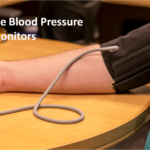Financed dinners in kid care attached to better children and families
Understudy carries food made of greens, entire wheat bread, natural product, and lowfat milk, Factory River Grade School, Kissimmee, Florida, photograph (Related PRESS)
Consistently, more than 4.2 million youngsters get healthy food and snacks through the Kid and Grown-up Care Food Program (CACFP), a governmentally funded, state-managed drive that repays kid care focuses and home day really focuses on giving food to qualified kids. Another investigation suggests the program strongly affects kids as well as their families, tying paid youngster care feasts to better kid wellbeing and lower paces of family food instability.
The review, distributed in the Diary of the Institute of Nourishment and Dietetics, found kids who got financed dinners in kid care settings were 30% less inclined to have family food frailty, 39% more averse to have poor or fair wellbeing, and 41 percent less inclined to be owned up to the clinic from the trauma center than their companions who ate feasts given by their folks while in care.
Buy into The Post Most folder for the most important and interesting news from The Washington Post.
Specialists talked with essential parental figures of 3,084 small kids getting trama center or essential consideration in Baltimore, Boston, Little Stone, Minneapolis and Philadelphia somewhere in the range of 2010 and 2020. The kids were all somewhere in the range of 13 and four years old and lived in low-pay families, and all got funded care outside the home for 20 hours or more each week. The majority of the kids were qualified for CACFP.
Most of the kids, 87.2 percent, had their dinners and snacks while in kid care given by the school or kid care seller, while 12.8 percent of the youngsters’ feasts in care were given by their folks.
In general, the kids with parent-if dinners were more youthful and likelier to have been brought into the world with a low birth weight than their friends who got feasts from the youngster care providers. They were likewise less inclined to have protection and more averse to have public protection than their friends.
The review didn’t show huge differences in kids in danger of being underweight or overweight or whose parents noticed critical chance factors.
A bigger extent of the children whose guardians gave their feasts and bites had exceptional medical services needs, so the scientists controlled for that consider an examination that showed “no adjustment of importance” when it came to family food doubt or fair or unfortunate kid wellbeing. Since prior research recommends kids with exceptional medical services needs are at a higher chance of food weakness, the scientists compose that this shows a “potential buffering impact of kid care taking care of projects.”
The experts write that during the pandemic, CACFP interest dropped, and note that kid care providers can experience difficulty going to CACFP stocks.
Generally speaking, they close, the link between better health and kid care-gave feasts “has advantages to small kids, their families, and society all in all.” They offer structures that strengthen and grow access to projects like CACFP.










